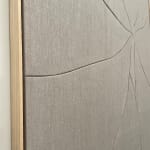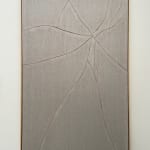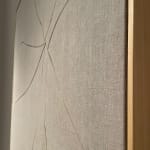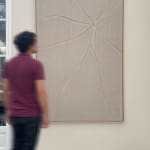
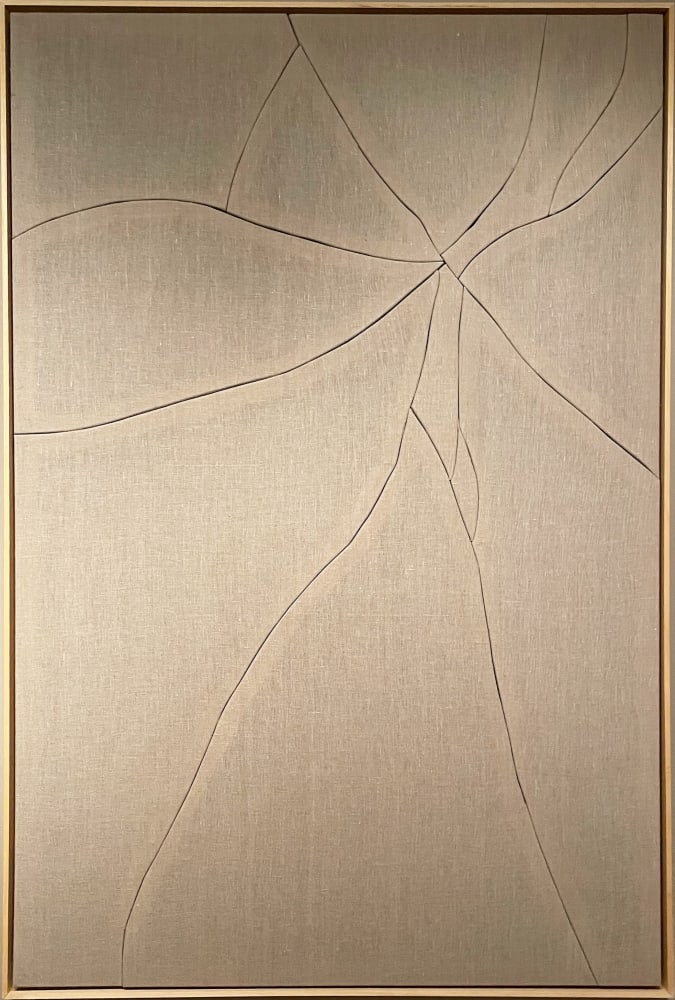



Pablo Mercado Spanish, 1983
Locke I, 2022
Lino sobre madera
200 x 135 cm
Further images
The exhibition proposal 'Locke's Skin' is inspired by the myth of the Ship of Theseus. Also known as the paradox of Theseus, a mental experiment that starts from the question...
The exhibition proposal "Locke's Skin" is inspired by the myth of the Ship of Theseus. Also known as the paradox of Theseus, a mental experiment that starts from the question that if all the components of an object have been replaced by replicas, the object remains the same. It is the eternal reflection on the mutability of identity and memory. This paradox has been explored by many philosophers such as Plato or the famous river of Heraclitus. John Locke takes a similar approach using his favourite sock as a metaphor. Locke pondered whether the sock could still be the same after a patch was applied to it. If so, could it then still be the same sock after the second patch? Could it, indeed, still be the same sock several years later, even after all the material of the sock had been replaced by patches?
In this series of works Mercado does not fragment the materials, as he has done in previous works, but modifies the very nature of the object, taking one characteristic of the object and replacing it with another. In this series of works he uses one of the most widely used materials in the history of art, the canvas. Using its skin as a metaphor, he has played with eliminating characteristics and reconstructing with others. Thus, the material of the canvas itself, the canvas, is replaced in some cases by other materials such as cement or resin. In other cases it is not the material but the way it is deformed and folded, returning once again to the metaphor of the skin. In this way, the rigid canvas folds or contracts as if it were another material. Or it is the layer of paint itself, torn from the canvas, that detaches from the support in the manner of a pictorial flaying.
In this series of works Mercado does not fragment the materials, as he has done in previous works, but modifies the very nature of the object, taking one characteristic of the object and replacing it with another. In this series of works he uses one of the most widely used materials in the history of art, the canvas. Using its skin as a metaphor, he has played with eliminating characteristics and reconstructing with others. Thus, the material of the canvas itself, the canvas, is replaced in some cases by other materials such as cement or resin. In other cases it is not the material but the way it is deformed and folded, returning once again to the metaphor of the skin. In this way, the rigid canvas folds or contracts as if it were another material. Or it is the layer of paint itself, torn from the canvas, that detaches from the support in the manner of a pictorial flaying.
193
de
217
Join our mailing list
* denotes required fields
We will process the personal data you have supplied in accordance with our privacy policy (available on request). You can unsubscribe or change your preferences at any time by clicking the link in our emails.

